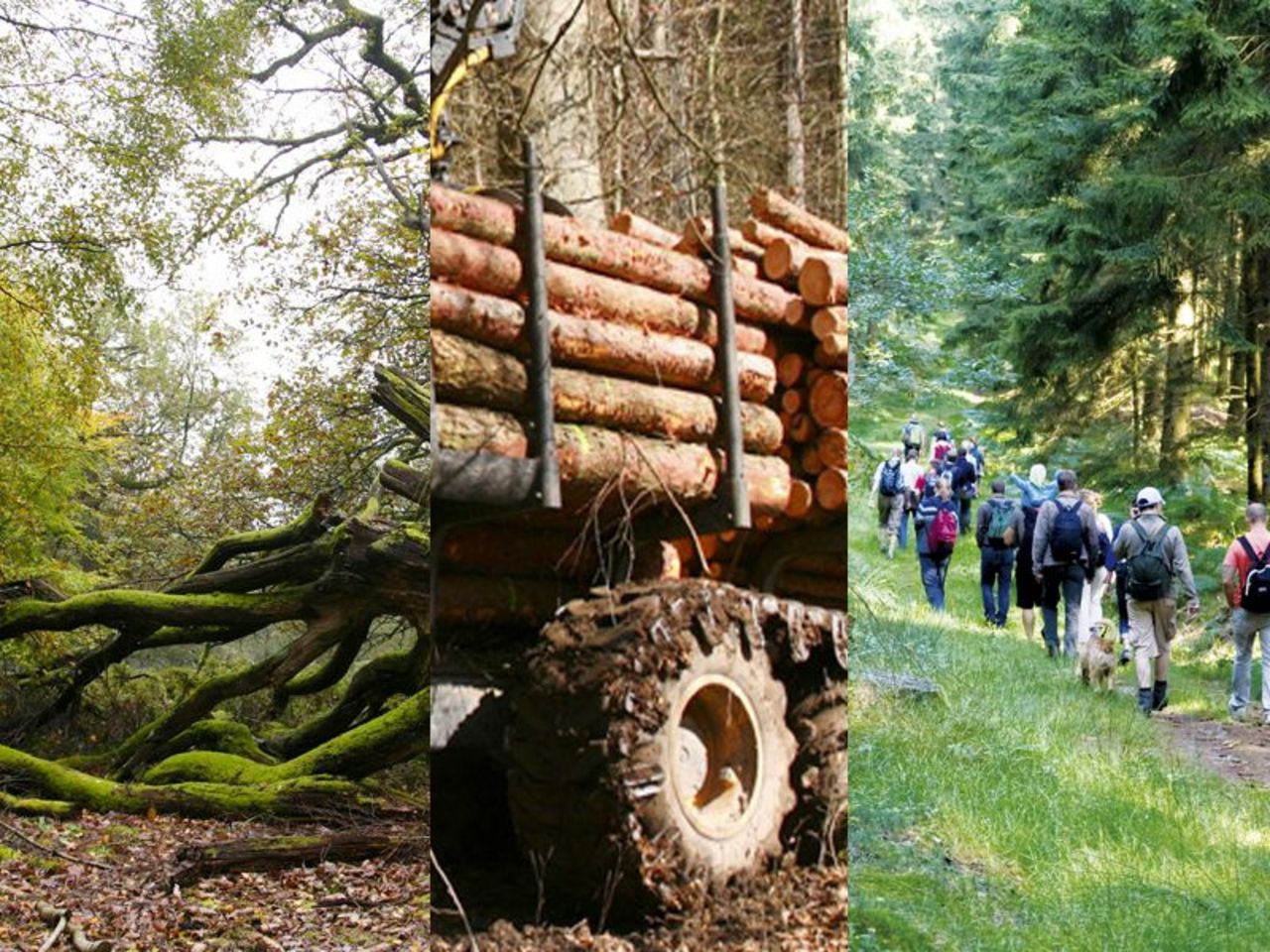Project
Strains in forest enterprises due to protective and recreational functions of forests

Strains in forest enterprises due to protective and recreational functions of forests
By the German forestry numerous conservation and recreation services in the forest are provided. Strains for the forest enterprises arise from the German law (“freies Waldbetretungsrecht” for recreation use) or out of actions for biodiversity protection. We contribute technical information to design the policy framework - for example in promotion of forestry.
Background and Objective
We carry out the research project in the context of the German Federal Government’s obligation to submit a report about the costs due to the protective and recreational functions of forests.
We want to assess the strains of forest enterprises due to protective and recreational functions in forests economically.
Strains can be determined by the accounting results of the Test Enterprise Network (TBN-Forst) of BMEL in the product section 2 "protection and restoration" and the product section 3 "recreation and environmental education". Diminution of the revenue in the production of round wood could be caused by abstinence of utilization as well. In the project the diminution of the revenue is defined as the evaded or unrealized returns in forest enterprises, which result from compulsory or voluntary limitations particularly in the wood production process.
Target Group
Bundesministerium für Ernährung und Landwirtschaft, Deutscher Bundestag
Approach
In order to determine revenues and expenses in the product sections 2 "protection and restoration" and 3 "recreation and environmental education" we analyse the accounting results of the Test Enterprise Network (TBN-Forst) of BMEL. In order to determine the diminution of the revenue in the product section 1 ”production of round wood and other forest products” due to the protective and recreational functions of forests, a supplementary survey of the TBN-enterprises was conducted. Subject of the survey were enterprise-individual control factors of forest management.
With the aid of a forest enterprise simulation model, the imputed revenues of a forest management, actively providing protection and recreation measures, and an enterprise-individual forest management alternative were calculated. We then determined the diminution of imputed revenues by subtracting both forest management alternatives.
Data and Methods
Our main input data were the annual accounting results of the Test Enterprise Network (TBN-Forst) of BMEL as well as the results of our supplementary TBN-survey. Due to the long production periods in forestry we used a forest enterprise simulation model. With the aid of this model, for example, the long-term economic effects of the conversion from spruce to beech stands could be calculated.
Our Research Questions
When and to what extent do strains for forest enterprises due to protective and recreational functions of forests occur in the course of time?
Results
In the year 2011, the burden (including public funding), borne by forest enterprises from safeguarding the protective and recreational functions of forests, was calculated as the sum of the two product areas for corporate forest (-16.85 €/ha) and private forest (-5.20 €/ha).
Furthermore we found an average annual difference in raw wood supply of 0.49 m³/ha for private forests and 0.45 m³/ha for corporate forests, and an annual difference in profit of 42.07 €/ha in private forests and 35.20 €/ha in corporate forests over the 200-year simulation period. The annuity of the differences of the capitalized earnings value in private forest is 39.83 €/ha and in corporate forest 35.18 €/ha.
Within the study we found out that a significant amount of the burden of safeguarding protective and recreational forest services is borne by forest enterprises through purposeful omission of raw wood production. Therefore reducing the calculation of the economic burden of safeguarding the provision of protective and recreational functions of forests to an analysis of the financial accounting only, would result in a serious underestimation of the economic impact on forest enterprises.
Thünen-Contact

Involved Thünen-Partners
List of Publications
- 0
Dög M, Seintsch B, Rosenkranz L, Dieter M (2016) Belastungen der deutschen Forstwirtschaft aus der Schutz- und Erholungsfunktion des Waldes. Landbauforsch Appl Agric Forestry Res 66(2):71-92, DOI:10.3220/LBF1467620583000



![[Translate to English:] Logo des Bundesministerium für Ernährung und Landwirtschaft](/media/allgemein/logos/BMEL_Logo.svg)